Roman Numerals
Here we will learn about Roman Numerals which are the special kind of numerical notations.
We have already learnt about the Indian and the International systems of numeration. There is another numeration system called the System of Roman Numeration. This is the oldest system of numeration, developed by the Romans and is still in common use.
REMEMBER: Roman numbers did not have '0' and so they did not have the concept of place values.
How to read and write roman numerals?
Hundreds of year ago, the Romans had a system of numbers which had only seven symbols. Each symbol had a different value and there was no symbol for 0.
Roman numeral system is one of the systems in which certain symbols are used to represent numbers. There are seven basic Roman numerals (Symbols).
The symbol of Roman Numerals and their values are:
Note: We also use K for 1000.
Romans used different combinations of symbols to write numbers using adding and subtraction.
For reading and writing numbers upto 50 we need only the first 4 symbols.
I V X L
The numerals used in the present number system (decimal system) are
0, 1, 2, 3, 4, 5, 6, 7, 8, 9.
These numerals were invented by Indians and later through the Arabs reached Europe. Hence this number system is termed as Hindu-Arabic Number System.
Early Romans developed a system of numerals. They are called Roman numerals. These are also commonly used in day-to-day life.
Sometimes the units of a book, different volumes of a book, class rooms in a school, the parts of a question, etc., are numbered in Roman numerals. On the dials of some clocks the hours are marked in Roman numerals.
Roman numerals are formed by using 7 symbols –
I, V, X, L, C, D, M.
The following table shows the Roman numerals and their corresponding values.
Roman Numerals
I
V
X
L
C
D
M
Value of the symbol in Hindu-Arabic numbers.
1
5
10
50
100
500
1000
This is not a place value system.
The numbers 2, 3, 4, 6, 7, 8 and 9 don’t have symbols in Roman System.
They are got by the method of addition or subtraction.
Rules for the First Five Symbols:
1: Multiplication Rule:
When a symbol is repeated in succession, we multiply the value of the numeral by the number of times it is repeated.
A symbol cannot be repeated more than three times in succession.
i.e., The symbol I, X, C and M can be repeated in succession up to 3 times only in writing a number.
For example:
II = 1 × 2 = 2
III = 1 × 3 = 3 or, III = 1 + 1 + 1 = 3
XX = 10 × 2 = 20
XXX = 10 × 3 = 30 or, XXX = 10 + 10 + 10 = 30
CCC = 100 × 3 = 300 or, CCC = 100 + 100 + 100 = 300
We cannot write 40 as XXXX.
The symbol cannot be repeated more than three times.
If a symbol is repeated at the most 3 times, its value is added as many times as it occurs, e.g., II = 2; XX = 20; XXX = 30, etc.
2. Addition Rule:
Writing a smaller number to the right of a larger number means the numbers have to be added.
i.e., If a symbol is written to the right of a greater number, we add its value to the value of the symbol on the left.
For example:
VI = 5 + 1 = 6
XI = 10 + 1 = 11
XII = 10 + 1 + 1 = 12
XV = 10 + 5 = 15
LXV = 50 + 10 + 5 = 65, etc.
Note: X can be repeated at the most 3 times.
3. Subtraction Rule:
Writing a smaller number to the left of a larger number means that the
smaller number has to be subtracted from the larger number. The symbol I
can be used for subtraction from V and X only. The symbol X can be
subtracted only from L and C.
i.e., If a symbol is written to the left of a greater number, we subtract its value from the value of the symbol on the right.
For example:
IV = 5 - 1 = 4
IX = 10 - 1 = 9
XL = 50 - 10 = 40
The symbol V cannot be repeated or subtracted.
We do not repeat V twice to get 10. We already have a symbol for 10. So VV for writing 10 is not correct.
We do not subtract 5 from any symbol. VX is not correct.
Rule 4. The symbol V, L and D are not repeated to form a bigger number.
i.e., A symbol is not repeated more than three times and the symbols V, L, D are never repeated.
For Example: 10 = X but 10 ≠ VV, etc.
Rule 5. Symbols V, L and D are never subtracted,
For Example: 5 = V but 5 ≠ VX, etc.
Rule 6. While writing Roman numbers first write the largest numeral.
Then put smaller numerals to the right (for addition) or left (for subtraction)
Note: The symbol V is never subtracted.
Rule 7. If X is written to the left of L and C, it is subtracted,
For Example: XL = 50 - 10 = 40,
XC = 100 - 10 =90.
Note: X can be subtracted from L and C only.
The following table gives the Roman numerals corresponding to the Hindu-Arabic numerals.
|
Hindu-Arabic Numbers |
Roman Numbers |
|
1 2 3 4 5 6 7 8 9 10 11 12 13 14 15 16 17 18 19 20 21 22 23 24 25 26 27 28 29 30 34 39 40 45 50 55 59 60 75 80 88 90 95 100 |
I II III IV V VI VII VIII IX X XI XII XIII XIV XV XVI XVII XVIII XIX XX XXI XXII XXIII XXIV XXV XXVI XXVII XXVIII XXIX XXX XXXIV XXXIX XL XLV L LV LIX LX LXXV LXXX LXXXVIII XC XCV C |
A list of Roman Numerals and their value are given below:
Writing Numbers in Roman Numerals:
For example:
1. Write the Roman Numerals for 27. Break up the number into Tens and Ones.
27 = 20 + 7
Write the symbol for 20 (XX) and place the symbol for 7 (VII) after it.
27 convert roman numerals as XXVII
2. Write the Roman numeral number for 43.
43 = 40 + 3
Symbol for 40 XL
Symbol for 3 III
Roman Numerals for 43 is XLIII.
3. Write 45 in Roman numeral.
We cannot write 45 as VL, because V is never subtracted.
Hence 45 = (50 – 10) + 5
= (L – X) + V
= XLV
Note: V, L and D do not precede any bigger digit.
4. Write 39 in Roman numeral.
39 = 30 + 9
= (10 + 10 + 10) + (10 - 1)
= (X + X + X) + (X – I)
= XXXIX
5. Write the following in Roman numerals:
(i) 53
(ii) 45
(ii) 98
(iv) 587
Solution:
(i) 53 = 50 + 3 = L + III = LIII
(ii) 45 = 40 + 5 = XL + V = XIV
(It should not be written as 50 - 5 ,i.e.,VL)
(iii) 98 = 90 + 8 = XC + VIII = XCVIII
(It should not be written as 100 - 2, i.e., IIC)
(iv) 587 = 500 + 50 + 10 + 10 + 10 + 5 + 2 = DLXXXVII
Reading Roman Numerals:
Look out for a subtraction operation. Do the subtraction before adding the numbers.
For example:
1. XXIV
I = 1
V = 5
IV = 4
XX = 20
IV = 4
Hindu–Arabic numeral for XXIV is 24.
2. XIX
X = 10
IX = 9
Hindu–Arabic number for XIX = 19
3. XXXII
In this example no subtraction is needed.
XXX = 30
II = 2
Hindu – Arabic number for XXXII = 32
4. Express XIV in decimal system of numeration.
XIV = X – IV
= 10 + 4
= 14
5. Express XXXV in decimal system of numeration
XXXV = XXX + V
= X + X + X + V
= 10 + 10 + 10 + 5
= 35
6. Write the following in Hindu Arabic (Indian) numerals:
(i) LXIII; (ii) XC; (iii) XXXVI
Solution:
(i) LXIII = L + X + III = 50 + 10 + 3 = 63
(ii) XC = 100 - 10 = 90
(iii) XXXVI = XXX + VI = 30 + 6 = 36
Solved Examples on Roman Numerals:
1. Write the Hindu-Arabic numerals for the following:
(i) XXII
(ii) IX
(iii) XIV
(iv) XXXIX
Solution:
(i) XXII = 10 + 10 + 1 + 1 = 22
(ii) IX = 10 - 1 = 9
(iii) XIV = 10 + 5 - 1 = 14
(iv) XXXIX = 10 + 10 + 10 + 10 - 1 = 39
2. Write each of the following in a Roman numeral:
(i) 9
(ii) 14
(iii) 26
(iv) 31
(v) 37
Solution:
(i) 9 = IX
(ii) 14 = 10 + 4 = XIV
(iii) 26 = 10 + 10 + 5 + 1 = XXVI
(iv) 31 = 10 + 10 + 10 + 1 = XXXI
(v) 37 = 10 + 10 + 10 + 5 + 1 + 1 = XXXVII
3. The Roman numeral for 479 is
(i) CD
(ii) CCCXLVI
(iii) CDLXXIX
(iv) CDIXX
Solution:
479 = 400 + 70 + 9 = CDLXXIX
So, the option (iii) is correct, which is the required answer.
Understanding of Roman Numerals:
Matchsticks.
Each numeral is made of 2 matchsticks.
Each numeral is made of 3 matchsticks.
Each numeral is made of 4 matchsticks.
Activity:
Roman numeral are used in many places will analogue clocks and watches. Find out some other places where these are used.
Questions and Answers on Roman Numerals:
1. What is the Addition Rule of Roman Numerals?
Answer:
If a symbol of smaller value is written to the right of a symbol of greater value, the value is added.
For Example:
VI = 5 + 1 = 6,
XII = 10 + 1 + 1 = 12,
LXV = 50 + 10 + 5 = 65, etc.
Note: X can be repeated at the most 3 times.
2. What is the Subtraction Rule of Roman Numerals?
Answer:
If a symbol of smaller value is written to the left of a symbol of greater value, its value is subtracted from the value of greater symbol.
For Example:
IV = 5 - 1 = 4
IX = 10 - 1 = 9 etc.
Note: I can be subtracted from V and X only.
3. A group of digits denoting a number is called a __________.
Answer: Numerals
4. What is the CDLX equals to
Worksheet on Roman Numerals:
I. Write the corresponding Roman numerals.
|
(i) 67 (ii) 58 (iii) 13 (iv) 16 (v) 29 (vi) 36 (vii) 5 (viii) 26 (ix) 81 (x) 77 (xi) 59 (xii) 95 |
(xiii) 28 (xiv) 22 (xv) 38 (xvi) 67 (xvii) 447 (xviii) 90 (xix) 47 (xx) 49 (xxi) 24 (xxii) 25 (xxiii) 324 (xxiv) 720 |
Answer:
I.
|
(i) 67 = LXVII (ii) 58 = LVIII (iii) 13 = XIII (iv) 16 = XVI (v) 29 = XXIX (vi) 36 = XXXVI (vii) 5 = V (viii) 26 = XXVI (ix) 81 = LXXXI (x) 77 = LXXVII (xi) 59 = LIX (xii) 95 = XCV |
(xiii) 28 = XXVIII (xiv) 22 = XXII (xv) 38 = XXXVIII (xvi) 67 = LXVII (xvii) 447 = CDXLVII (xviii) 90 = XC (xix) 47 = XLVII (xx) 49 = XLIX (xxi) 24 = XXIV (xxii) 25 = XXV (xxiii) 324 = CCCXXIV (xxiv) 720 = DCCXX |
II. Write the corresponding Hindu-Arabic (Indian) numerals.
|
(i) XCIX (ii) LVI (iii) XXVI (iv) XCVI (v) LXXXIII (vi) XXX (vii) XCI (viii) XXV (ix) LXIX (x) VI (xi) XVIII (xii) XXXII |
(xiii) XXXIX (xiv) LX (xv) XXIII (xvi) XXXV (xvii) XXXIV (xviii) XXVII (xix) XXVIII (xx) XXIV (xxi) XXI (xxii) LII (xxiii) XXXVI (xxiv) DLII |
Answer:
II.
|
(i) XCIX = 99 (ii) LVI = 56 (iii) XXVI = 26 (iv) XCVI = 96 (v) LXXXIII = 83 (vi) XXX = 30 (vii) XCI = 91 (viii) XXV = 25 (ix) LXIX = 69 (x) VI = 6 (xi) XVIII = 18 (xii) XXXII = 32 |
(xiii) XXXIX = 39 (xiv) LX = 60 (xv) XXIII = 23 (xvi) XXXV = 35 (xvii) XXXIV = 34 (xviii) XXVII= 27 (xix) XXVIII = 28 (xx) XXIV = 24 (xxi) XXI = 21 (xxii) LII = 52 (xxiii) XXXVI = 36 (xxiv) DLII = 552 |
III. Write whether the following are true or false.
(i) XVI = 14
(ii) IV = 6
(iii) IX = 9
(iv) XL = 60
(v) XC = 90
Answer:
III. (i) False
(ii) False
(iii) True
(iv) False
(v) True
IV. Fill in the correct sign '<', '>' or '='.
(i) XXIX _____ XXXI
(ii) XLV _____ LXV
(iii) XCII _____ XC
(iv) LXX _____ XL
(v) XCI _____ LXXI
(vi) IV _____ VI
(vii) XIX _____ XXI
(viii) XIX _____ XI
(ix) III _____ XIV
(x) 10 _____ XIX
(xi) XXIX _____ 33
(xii) XV _____ 15
(xiii) 16 _____ XVII
(xiv) XXXI _____ 28
(xv) 10 + 4 _____ XIV
(xvi) XXV _____ XXI
(xvii) XV _____ XX
Answer:
IV. (i) XXIX < XXXI
(ii) XLV < LXV
(iii) XCII > XC
(iv) LXX > XL
(v) XCI > LXXI
(vi) IV > VI
(vii) XIX < XXI
(viii) XIX > XI
(ix) III < XIV
(x) 10 < XIX
(xi) XXIX < 33
(xii) XV = 15
(xiii) 16 < XVII
(xiv) XXXI > 28
(xv) 10 + 4 = XIV
(xvi) XXV > XXI
(xvii) XV < XX
V. Which of the following are meaningless?
(i) VX
(ii) IXIV
(iii) XIX
(iv) XVI
(v) VVV
(vi) XV
(vii) LL
(viii) LC
(ix) XVIII
(x) VL
Answer:
V. (i) VX
(ii) IXIV
(iv) XVI
(v) VVV
(vii) LL
(viii) LC
(x) VL
VI: Solve and write the answers in Roman Numerals:
(i) 6 + 18 = _____
(ii) 36 - 6 = _____
(iii) XXI + XIII = _____
(iv) XXI - X = _____
(v) XXX - VII = _____
(vi) X + XI = _____
(vii) 50 - 25 = _____
(viii) 14 + 9 = _____
Answer:
VI: (i) XXIV
(ii) XXX
(iii) VIII
(iv) XI
(v) XXIII
(vi) XXI
(vii) XXV
(viii) XXIII
VII. The Roman numeral for 986 is
(i) CMLXXIX
(ii) CMLXXXVI
(iii) MCXLIX
(iv) CMXLIX
Answer: (ii) CMLXXXVI
VIII. State True or False
(i) 346 in Roman numerals equals to LXI
(ii) CMLXXXVIII equals to 988
Answer:
VIII. (i) False
(ii) True
Related Concept
● Rules for Formation of Roman-numerals
From Roman Numerals to Home page
Didn't find what you were looking for? Or want to know more information about Math Only Math. Use this Google Search to find what you need.
Recent Articles
-
Subtraction of 4-Digit Numbers | Subtract Numbers with Four Digit
Jan 11, 25 03:35 PM
We will learn about the subtraction of 4-digit numbers (without borrowing and with borrowing). We know when one number is subtracted from another number the result obtained is called the difference. -
3rd Grade Addition Worksheet | 3-Digit Addition | Word Problems | Ans
Jan 11, 25 01:06 PM
In 3th Grade Addition Worksheet we will solve how to addition of 3-digit numbers without regrouping, addition of three 3-digit numbers without regrouping, addition of 3-digit numbers with regrouping… -
Addition of 4-Digit Numbers | 4-Digit Addition |Adding 4-Digit Numbers
Jan 11, 25 03:16 AM
We will learn about the addition of 4-digit numbers (without carrying and with carrying). We know how to add 2 or 3, 3-digit numbers without carrying or with carrying. -
Worksheet on Addition of 4-Digit Numbers | 4 Digit Addition Worksheets
Jan 11, 25 02:48 AM
Practice the questions given in the worksheet on addition of 4-digit numbers. Here we will add two 4-digit numbers (without carrying and with carrying) and three 4-digit numbers -
Word Problems on 4-Digit Numbers |Addition and Subtraction of 4-Digits
Jan 10, 25 02:49 PM
We will solve here some of the word problems on addition and subtraction of 4-digit numbers. We will apply the same method while adding and subtracting the word problems. 1. In a village, there are 25…

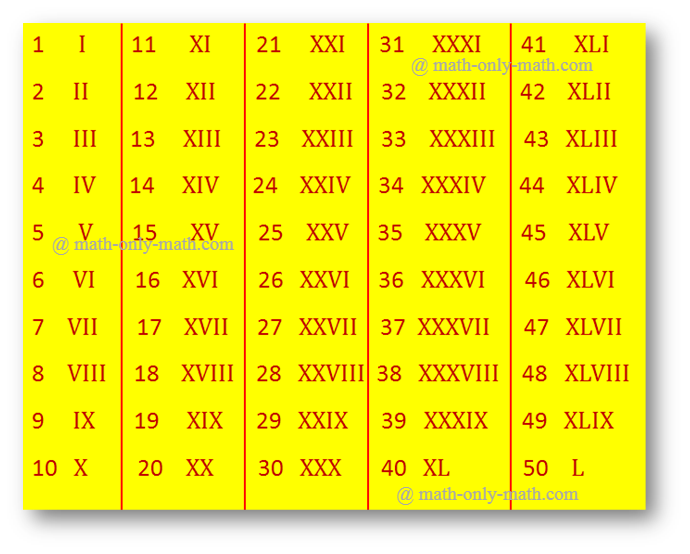
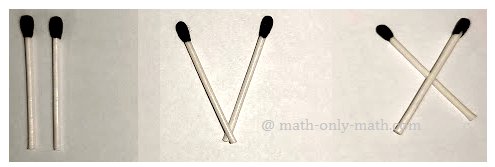





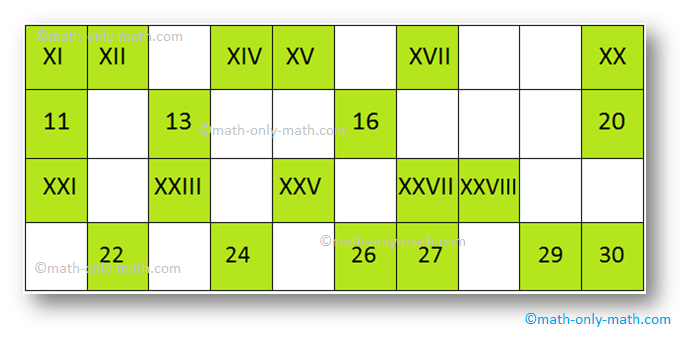
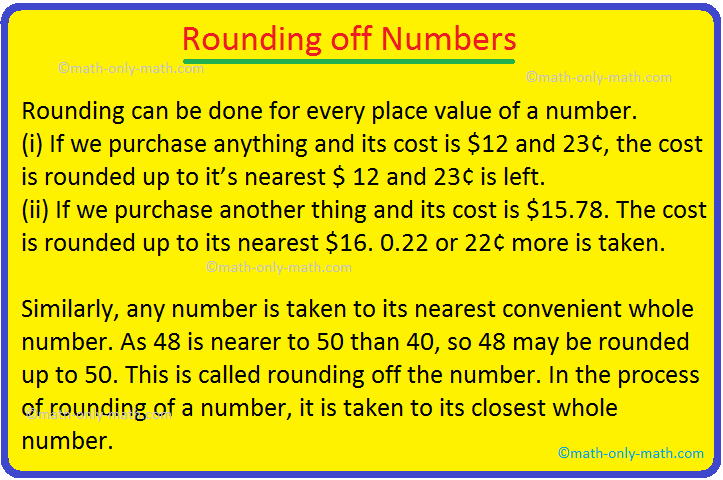
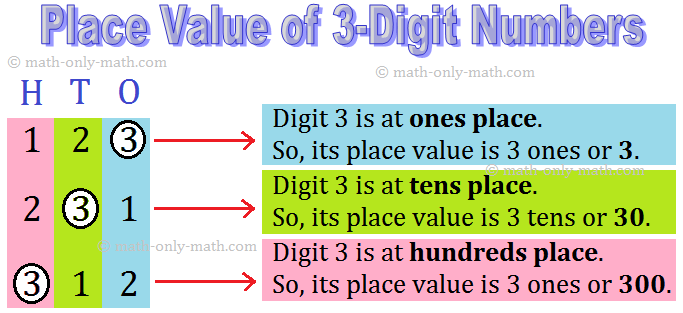

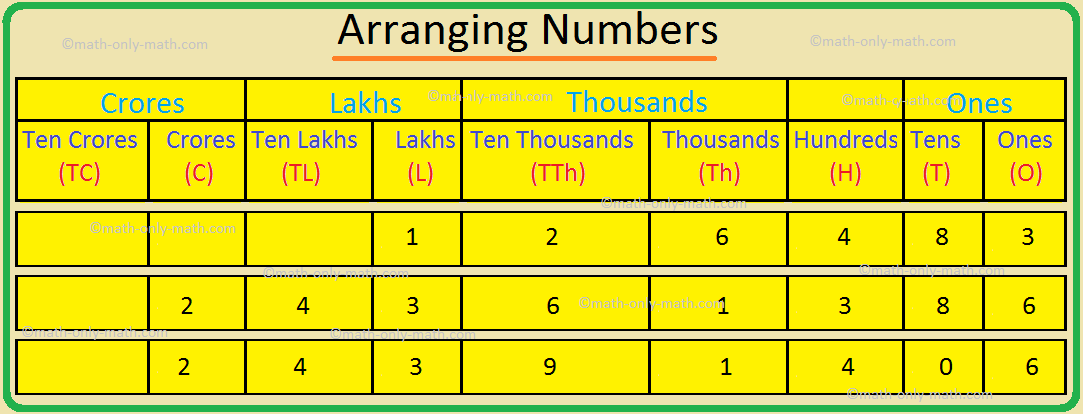

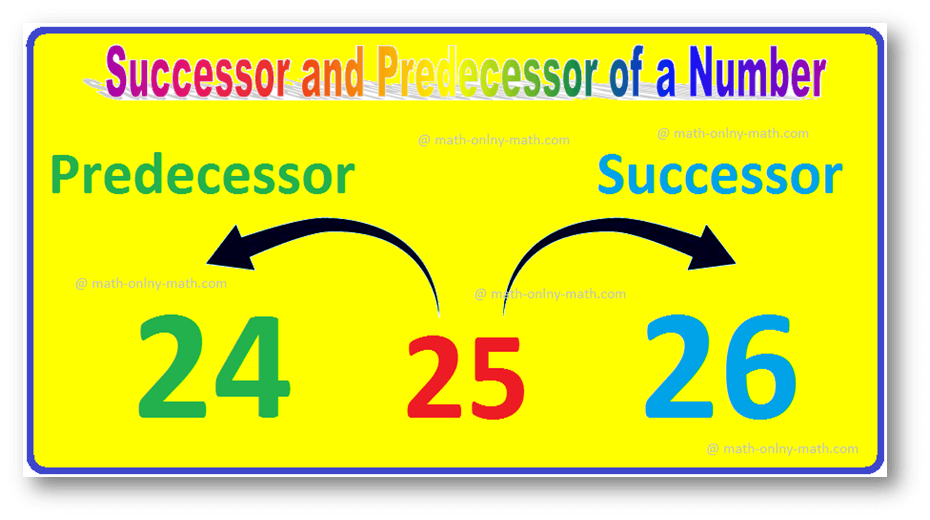
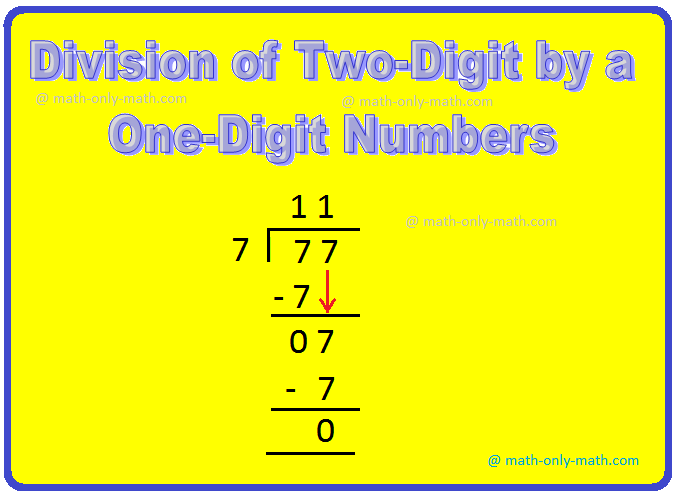
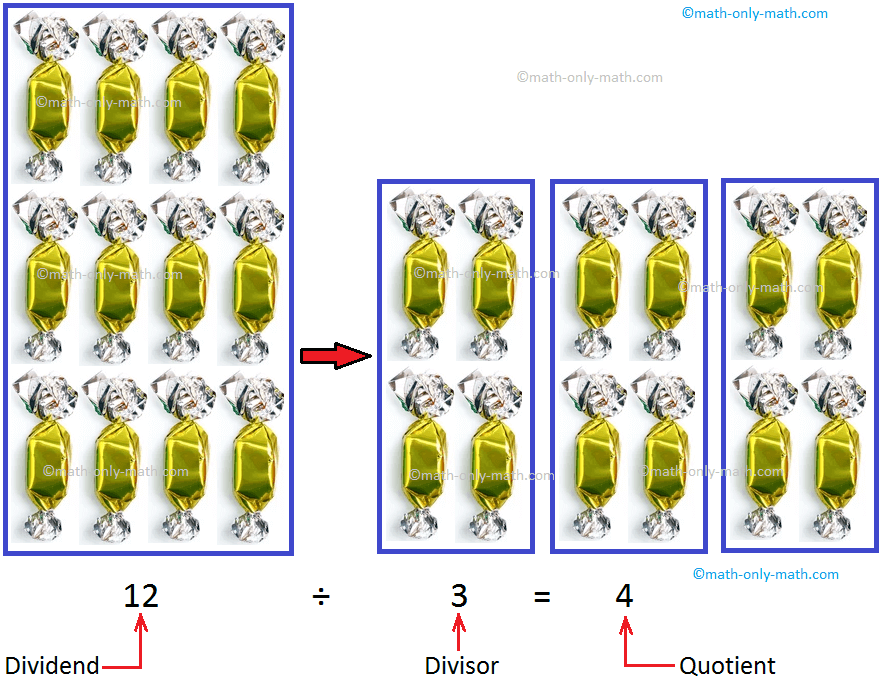

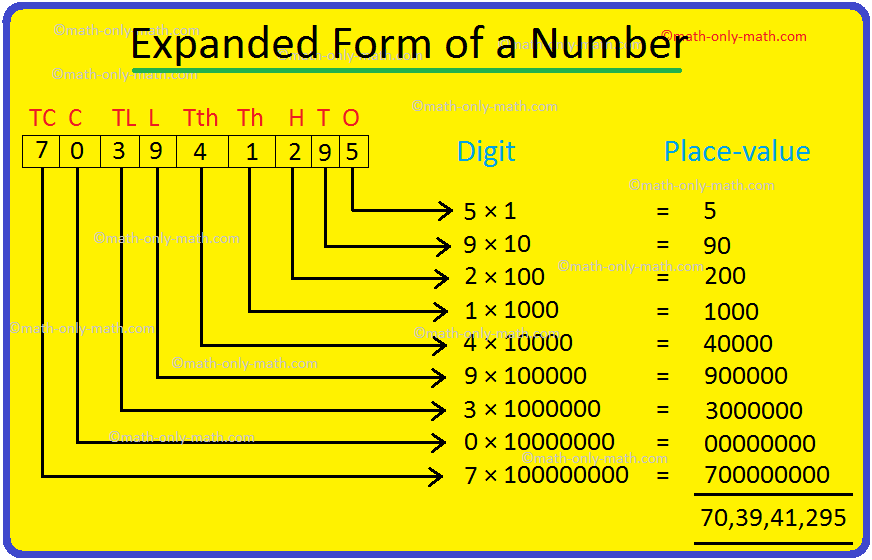

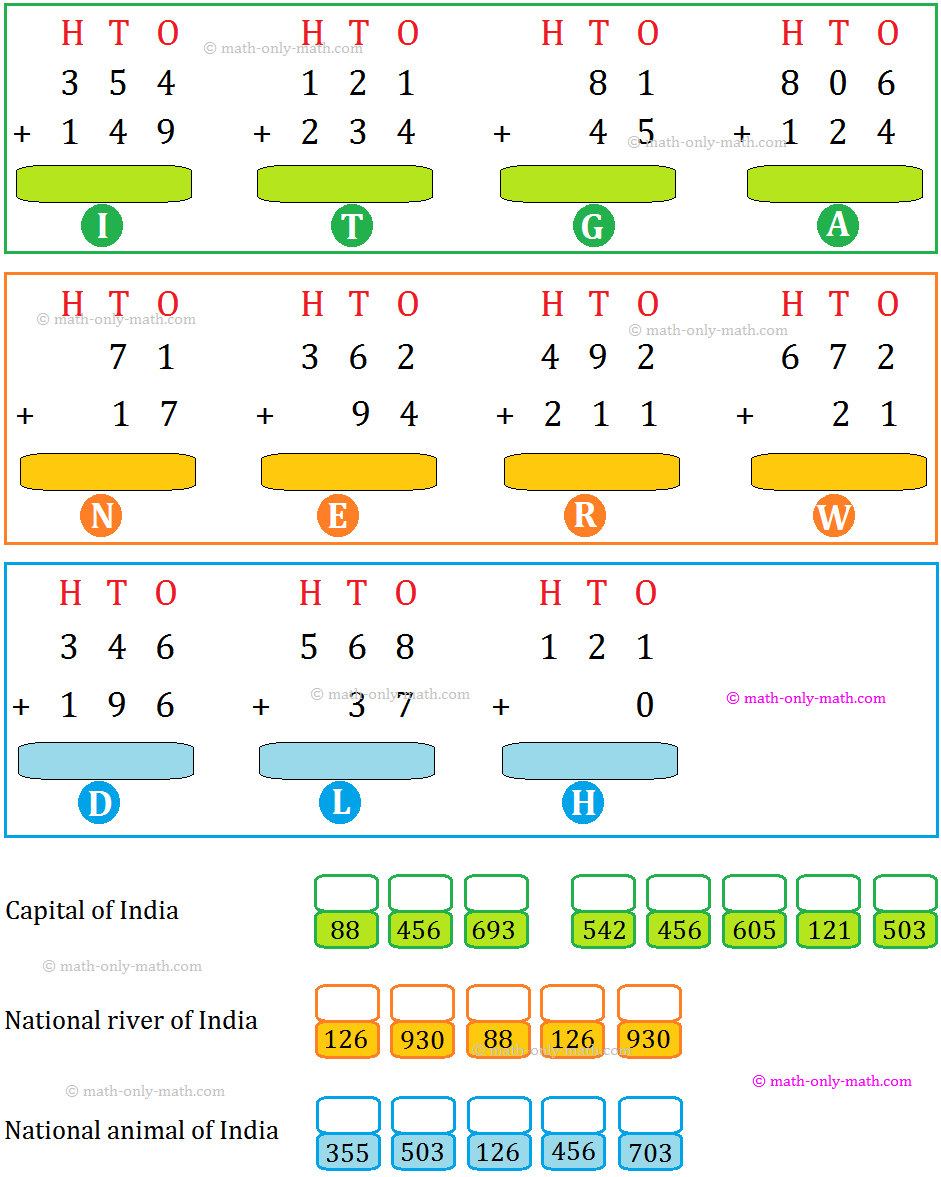

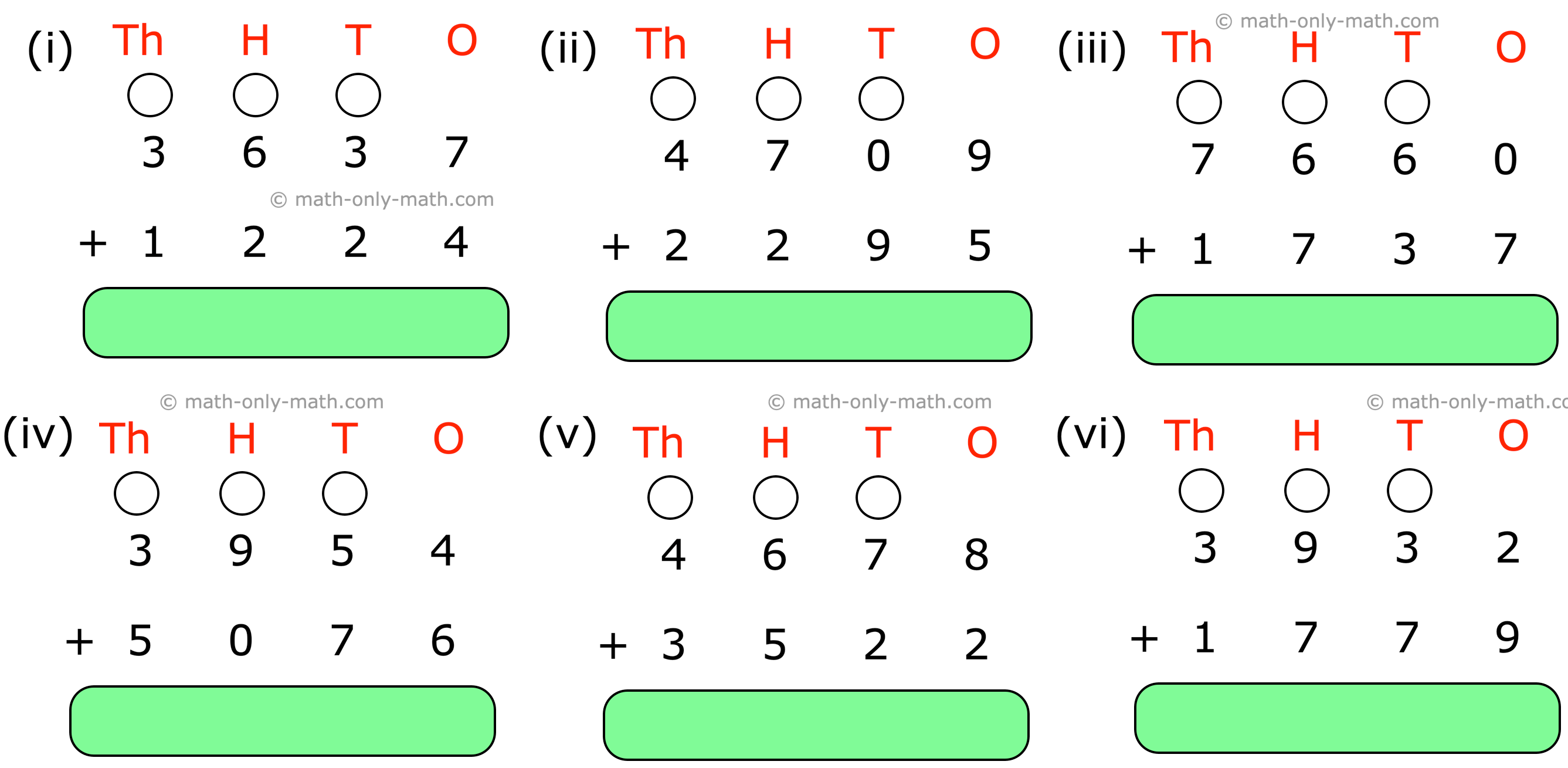
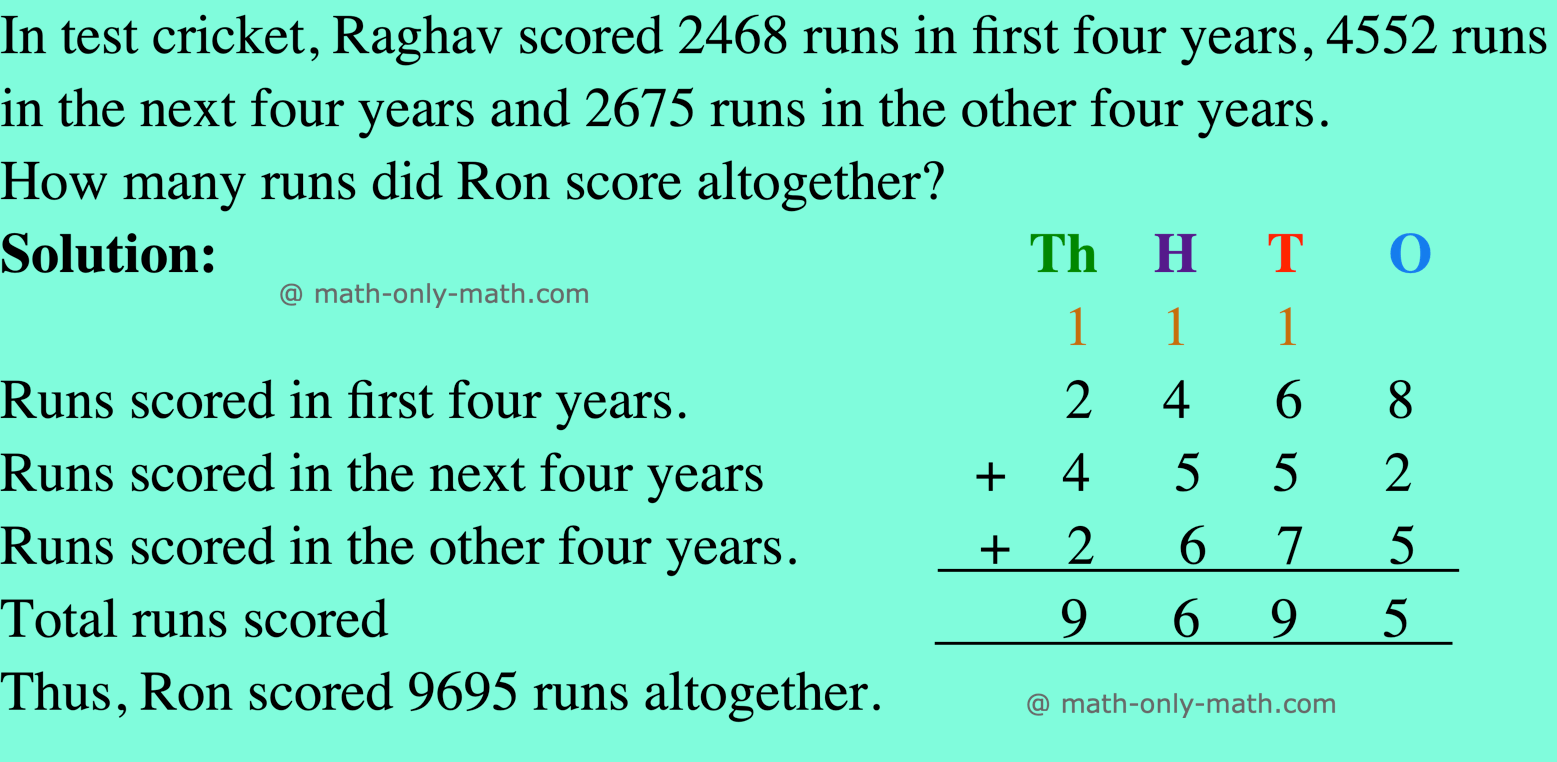
New! Comments
Have your say about what you just read! Leave me a comment in the box below. Ask a Question or Answer a Question.